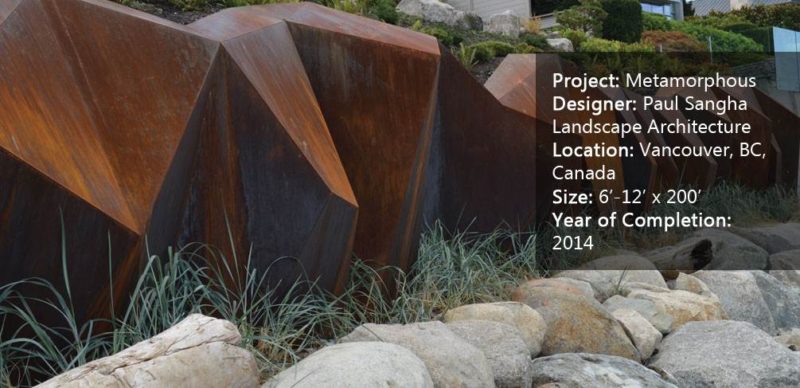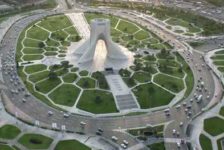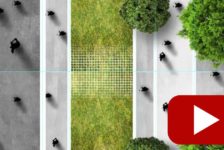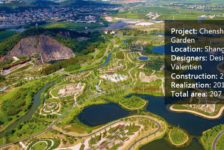Metamorphous by Paul Sangha Landscape Architecture in Vancouver, BC, Canada. When you hear the word metamorphosis, you usually associate it with the caterpillar turning into the butterfly. And, even though, the caterpillar and the butterfly don’t apply here, you are about to witness something quite similar — a major change in the appearance and character of a landscape. Let’s continue with the meaning of the adjective metamorphous, which describes things related to or resulting from metamorphosis. The adjective is specially used for rocks that have been altered considerably from their original structure.
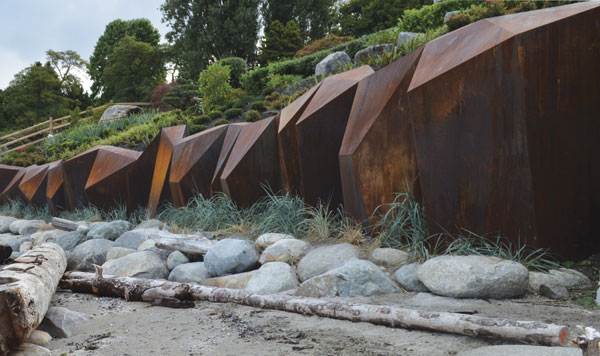
Metamorphous. Photo courtesy of Paul Sangha Landscape Architecture
Metamorphous
Clarifying the nature of these terms is perhaps much more relevant than it seems, mainly because of the strong presence of the inspired-by-nature design concept within the framework of a project in British Columbia, Canada. All of this leads to the question: Isn’t the design process much easier when there is inspiration? Even if you think you know the answer to that question, you’ll be surprised at the answer hidden in the eccentric project of Paul Sangha Landscape Architecture – “Metamorphous”.
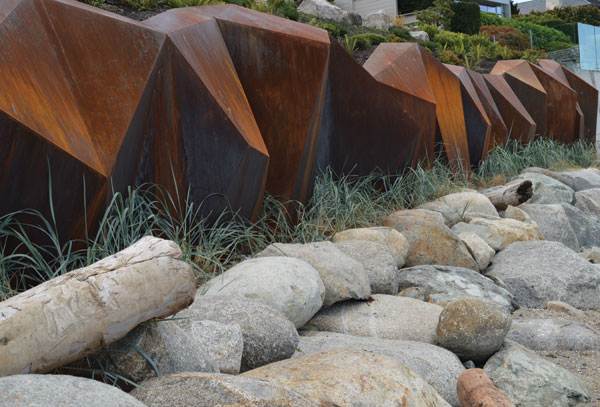
Metamorphous. Photo courtesy of Paul Sangha Landscape Architecture
Before discussing the project, you must first get acquainted with the prime reason for its beginning. Everything started with the King Tides (especially high tides), which in 2012 struck the British Columbia coastline. As a result, the entire bank and deck of a private Vancouver property were carved out and ruined.
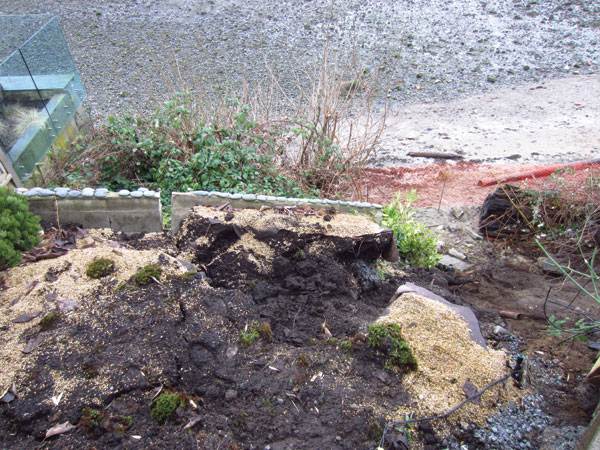
A damaged coastline. Photo courtesy of Paul Sangha Landscape Architecture
That’s when Paul Sangha Landscape Architecture helped the owners with a rational solution, entirely different from the previous oceanfront concrete walls that had led to foreshore erosion. To avoid such negative consequences, the landscaping team made every endeavor to create something durable, but extraordinary at the same time.
Inspiration from Abstraction To develop that solution, the firm collaborated with ocean engineers in order to provide a retaining wall that will safely reinforce and preserve the foreshore. Through the creative aspect of the task, designers captured the opportunity of inventing a unique waterfront, distinguishable amongst the whole Vancouver strand.

Metamorphous. Photo courtesy of Paul Sangha Landscape Architecture
With the idea to transform the shoreline both physically and aesthetically, inspiration literally came into sight. The insight emerged from the sandstone formations seen on Saturna Island in British Columbia. The idea evolved into the design of a fancy, unique abstract seawall sculpture, inspired by the natural form of rocks. Following the line of metamorphosis, the material used for the sculpture was Corten steel, which is also known as weathering steel due to its curious ability to change its appearance over time.
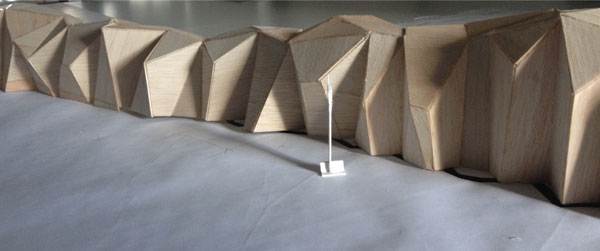
The model for Metamorphous. Photo courtesy of Paul Sangha Landscape Architecture
That’s how a retaining wall became an exceptional work of art, and a constantly changing attractive sculpture became a functional, resistant construction. An incessant change was born from a moment of inspiration.
The Dissipation of Wave Energy Through Design All those remarkable characteristics of “Metamorphous” don’t cease here. To examine closer how that seawall functions, take a look at the beneficial effects that followed after the installation. The combination of the abstract shape of Corten steel and the strategically considered boulder arrangement along the coastline were of greatest importance for the even dissipation of wave energy. Besides that, the specific placement was also crucial for the facilitation of sand deposition, which could strengthen the foreshore and offer habitat to vegetation and wildlife.
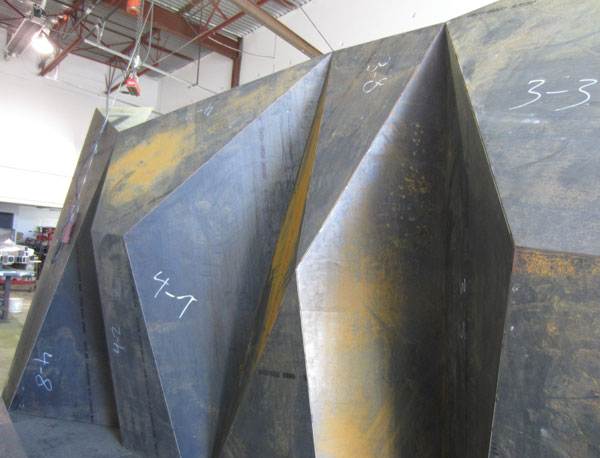
The making of Metamorphous. Photo courtesy of Paul Sangha Landscape Architecture
Another advantage of using Corten steel was the rational method of its fabrication. Physical and computer models were designed, with the last one being fed into an automated water jet cutter in order to minimize material waste. As a result of the efficiency efforts, the final cost turned out to be equal to the one that could have been spent on a series of concrete walls.

The making of Metamorphous. Photo courtesy of Paul Sangha Landscape Architecture
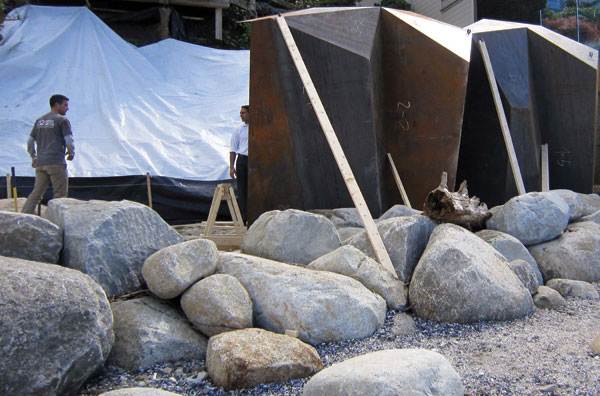
The making of Metamorphous. Photo courtesy of Paul Sangha Landscape Architecture
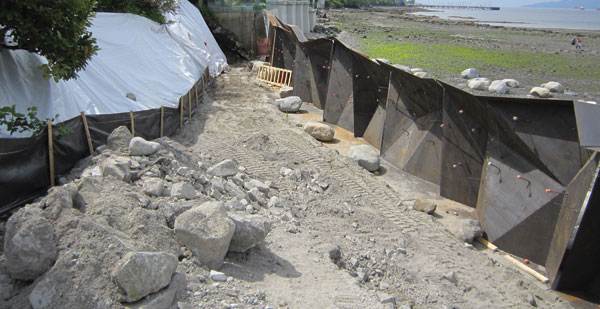
The making of Metamorphous. Photo courtesy of Paul Sangha Landscape Architecture
Along these lines, “Metamorphous” proves that such design solutions can highly improve the functional and aesthetic qualities of a place. Through its appealing, one-of-a-kind design, the Corten steel wall has significantly contributed to the public engagement on the beach. In this way, that retaining seawall supports not only the coastline of Vancouver, but supports its identity.
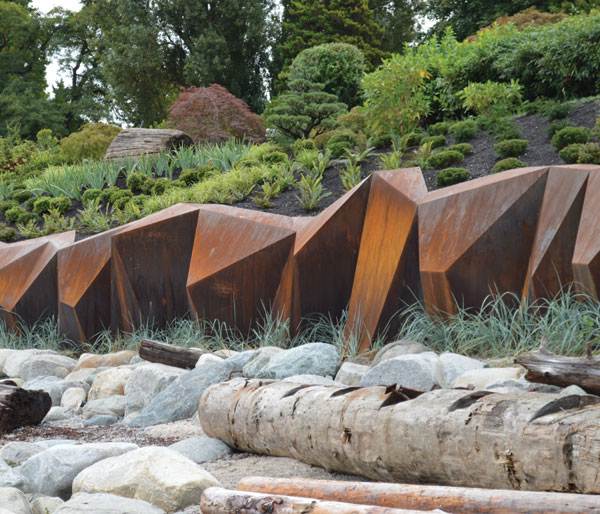
Metamorphous. Photo courtesy of Paul Sangha Landscape Architecture
Having reviewed the project in so many aspects, it is high time to discuss the last but the most important one – the ultimate purpose of the landscaping team. As it has already become clear, the team of Paul Sangha Landscape Architecture strongly believes in their philosophy, “
Our aim is simple: to design beautiful natural environments that inspire and refresh those who use them”, as it is presented on their website. That aim is certainly accomplished, as through their own inspiration, they inspire. And all artists know that to be inspired is great, but to inspire is amazing.
Recommended Reading:
Article by Velislava Valcheva Return to Homepage
Published in Blog












